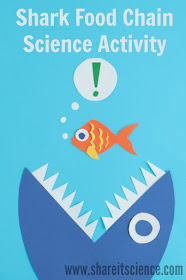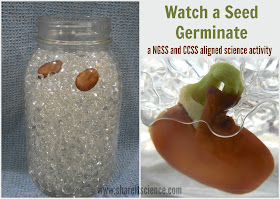This science activity will help you model the concept of being ectothermic, or cold-blooded, by using temperature sensitive color changing play dough! It will help your science students or your kids at home better understand what happens when a turtle, snake or lizard sits in the sun or under a heat lamp. If you are looking to include STEM or STEAM elements in your curriculum, this activity includes art and design, as well as opportunities for including technology.
This post contains affiliate links, meaning I will receive a small commission (at no additional cost to you) if you make a purchase after clicking a product link. Please see disclosures for more information.
Cold-blooded vs. Warm-blooded
Students often believe that warm-blooded animals are always warm inside and cold-blooded animals are always cold inside. Warm-blooded animals, like mammals and birds, can regulate their own body temperature and maintain a consistent body temperature unless ill. Cold-blooded animals, like reptiles, amphibians and fish have a body temperature that adapts to the ambient temperature. If conditions are cold, the animal will be cold, and likewise if conditions are warm the animal will be warm.
Ectotherm (cold-blooded) and Endotherm (warm-blooded) are more accurate terms, but also can be confusing words for young students. The activity below will help model why cold-blooded animals must move locations to adjust their body temperature.
Cold-blooded Creatures Experiment
For this science lesson you will need the following:
- Temperature sensitive play dough (you'll find the recipe we used in the STEAM Kids e-book, and you will need some thermochromic pigment to add to your dough, or you can experiment with other pre-made color changing doughs and putties)
- Large transparent container such as a terrarium or aquarium
- Clamp light with a heat-generating light bulb (an aquarium lamp will also work)
- Clock and/or stopwatch
- Infrared surface thermometer (optional, but will allow you to measure the surface temperature of the play dough animals)
- Tablet or camera with time-lapse capability (optional, but a great way to integrate technology in your experiment!)
Create Color Changing Creatures
To make our temperature sensitive color changing play dough, I used the recipe found in the STEAM Kids e-book (the print version available on Amazon). The secret sauce to temperature sensitive dough is thermochromic pigment. This pigment powder is the same stuff that causes mood rings to change color and makes the magic happen in other color-change products like nail polish.

If you are using the recipe from the STEAM Kids book (which I highly recommend for tons of little projects as well as ideas like this one that can be incorporated into other lessons) you will want to double, or maybe even triple the recipe when working with a large group of children.
When the dough is heated, it will change color. In this experiment, the color change is the indication that the "body temperature" of the dough creature is changing.
Experiment with Color Changing Cold-blooded Creatures!
Have students make a hypothesis about the outcome of shining the light on the dough animals. Will they heat up? How long will it take for the animal to change color?
Determine how you will run the experiment. How often will you check on the play dough animals? Will you be taking their surface temperature? How will you collect data?
Once the kids have designed and built their their reptiles, amphibians or fish, place them in the terrarium. Be sure everyone is on the same page on how the experiment will be run.
Clip the light to the side of the aquarium. Be sure everyone involved understands this lamp will get hot! Use the necessary precautions and adult supervision.
We found that in our experimental set-up the color change occurred very quickly when heated, then changed back very slowly when cooled. We decided to make a time-lapse video of the process to capture the changes. This brief video is comprised of many still photos of the changes that took place over several minutes.
Once the students have observed and collected data, wrap up with a discussion. Here are some potential discussion questions:
- What was realistic about this model?
- What was unrealistic?
- How hot did the surface of the cold-blooded creatures in the experiment get?
- Why do cold-blooded animals sun themselves?
- How do cold-blooded animals survive the winter months in climates with freezing temperatures?






















